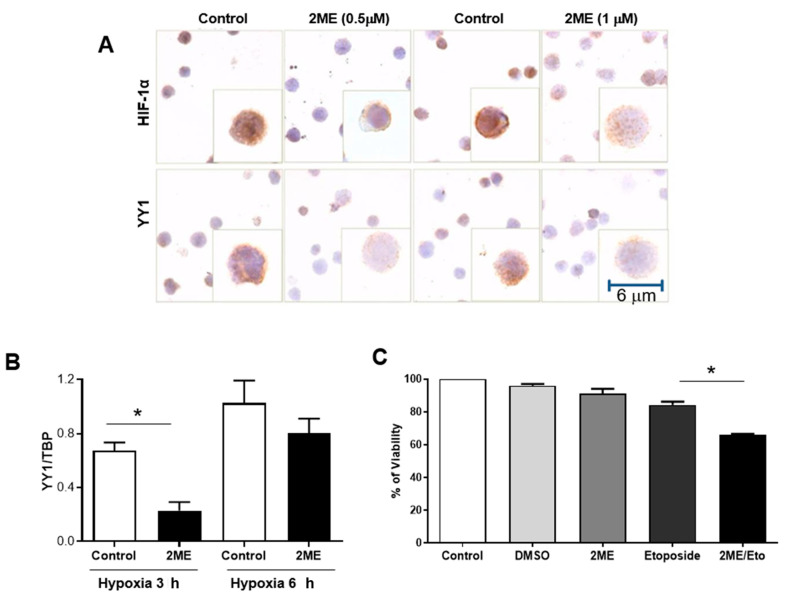Figure 4.
The abrogation of HIF-1α by a chemical inhibitor induces a reduction in YY1 expression. (A) is an ICC staining of HIF-1α and YY1 in RS4;11 cells, untreated and treated with 2ME (0.5 and 1 μM) for 6 h. Results show that when HIF-1α is inhibited with 2ME, YY1 decreases correspondingly. (B) These results were corroborated by real-time PCR, untreated and treated with 2ME (0.5 μM) for 3 or 6 h. A significant decrease was found at 3 h under hypoxia (* p = 0.01 one-way t-student). At 6 h there were no significant changes but there was a clear trend. (C) RS4;11 cells were treated with 2ME alongside with etoposide, a chemotherapy drug. A significant decrease in viability of RS4;11 cells is observed (* p = 0.01 one-way ANOVA-test) when treated with etoposide in combination with 2ME. Graph shows the results of triplicates of three independent experiments. RS4;11 cells were pre-treated for 12 h with 2ME (0.5 µM). Subsequently, the cells were treated with etoposide (0.125 µg/mL). Cell viability was determined after 50 h of co-treatment using MTT (* p ˂ 0.05, vehicle or Eto vs. 2ME + Eto).

